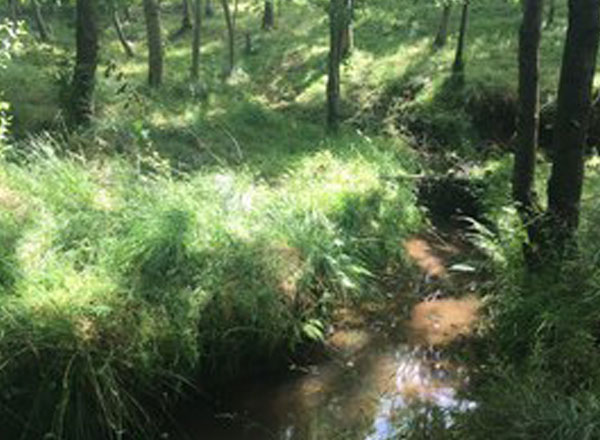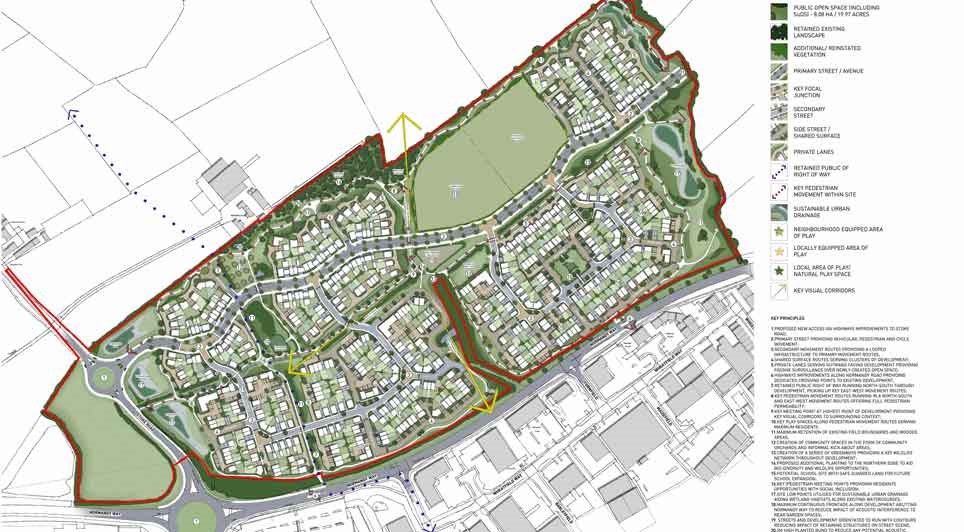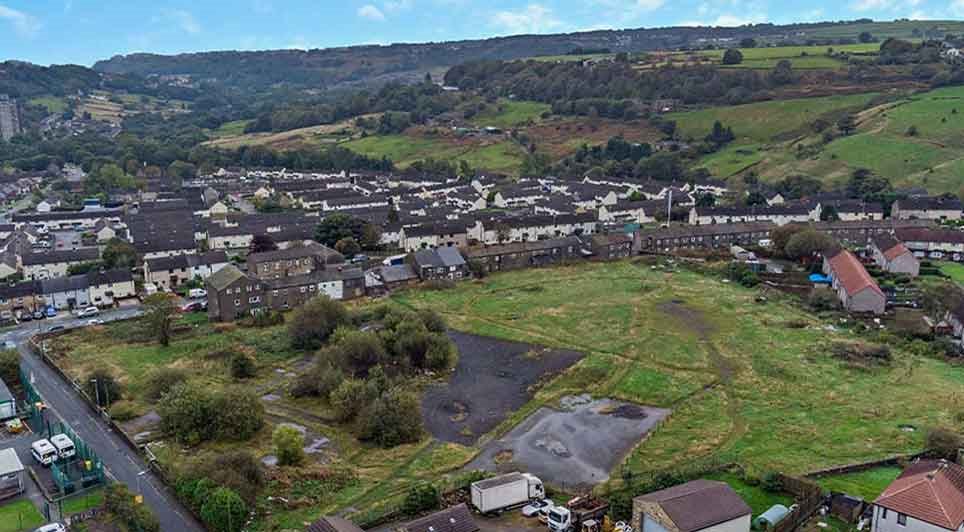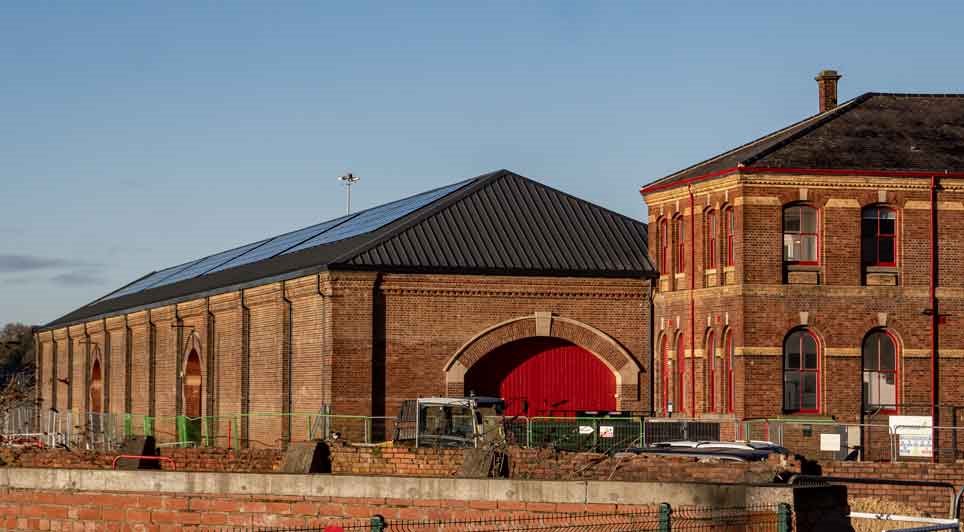Construction News
27/08/2019
New Natural Flood Protection Scheme Being Trialled In Leeds

A new trial project for natural flood protection will see hundred of trees being planted along the banks of the River Aire in Leeds.
The pilot site on a working farm at Eshton Beck, Gargrave now has 650 new trees planted by staff and trainees from Yorkshire Wildlife Trust and volunteers.
Yorkshire Wildlife Trust has also worked on three further pilots on the same site, with a whole host of volunteers from the Environment Agency, Leeds City Council, Yorkshire Water, The Conservation Volunteers, Craven Conservation Group and SCAPA, a firm based in Gargrave. They were also helped by students and staff from Leeds University and NVQ trainees from Craven College. The flood alleviation work involved building 66 log and brash leaky dams, planting a further 850 trees, undertaking 0.5ha of woodland management, building a 20m-long log revetment – using timber to prevent bank erosion and installing 200m of fenceline and a water gate to protect the new trees from nearby grazing stock.
The aim is to see how natural techniques can slow the flow of water and reduce the risk of flooding downstream. The trees include dogwood, guelder rose, downy birch, alder, and willow which will be planted along with hedgerows of hawthorn, blackthorn and hazel. Other measures carried out at part of the project include fencing works, creating leaky barriers and woody dams and stabilising river banks. The natural flood management pilot forms part of the Leeds Flood Alleviation Scheme, led by Leeds City Council in partnership with the Environment Agency, which has a catchment wide approach to flood risk as it enters its second stage.
This £500,000 pilot programme, funded by Leeds City Council, uses natural methods to slow the flow of water from upstream in the catchment. This includes land management to reduce water run-off, woodland creation to increase tree canopy cover and river and flood plain restoration so that the landscape can hold more water in times of flood.
These pilot sites will allow the team to monitor and research the techniques used to gather evidence and increase their understanding of the benefits they provide for reducing flood risk. The pilot programme will also be used by the Environment Agency and Leeds City Council to develop a co-design approach to working with landowners, tenants, local authorities and other key partners such as the Aire Rivers Trust and the White Rose Forest. This will help to then develop future plans for the catchment.
Working with natural processes to reduce flood risk - known as natural flood management (nfm) - is an important part of managing and reducing flood risk in a sustainable way alongside more traditional engineering solutions. The interventions will also create habitat for wildlife and help regenerate rural and urban areas through tourism.
The second phase of Leeds Flood Alleviation Scheme has a strong focus on natural flood management, with proposals to create new woodland areas which would more than double canopy coverage in the River Aire catchment. It focuses on protecting the Kirkstall corridor, which was badly hit by the 2015 Christmas floods, and areas beyond the city boundary to further reduce the possibility of the river flooding in Leeds.
Chris Milburn, Project Executive at the Environment Agency said: "This work at Eston Beck contributes to local flood risk reduction and wider environmental benefits, slowing the flow of water locally and to downstream communities."
Don Vine, conservation officer with Yorkshire Wildlife Trust, also said: "This has been a great project. We have had support from the landowner and real interest from neighbouring farmers - with so much assistance from so many different volunteer groups; from university students to local NVQ trainees and a Gargrave based corporate group. We have already seen some small changes along the watercourse due to our recent work and we will be monitoring all these interventions over the next few years to measure impact - not only river flow, but also water quality and wildlife."
(MH/JG)
The pilot site on a working farm at Eshton Beck, Gargrave now has 650 new trees planted by staff and trainees from Yorkshire Wildlife Trust and volunteers.
Yorkshire Wildlife Trust has also worked on three further pilots on the same site, with a whole host of volunteers from the Environment Agency, Leeds City Council, Yorkshire Water, The Conservation Volunteers, Craven Conservation Group and SCAPA, a firm based in Gargrave. They were also helped by students and staff from Leeds University and NVQ trainees from Craven College. The flood alleviation work involved building 66 log and brash leaky dams, planting a further 850 trees, undertaking 0.5ha of woodland management, building a 20m-long log revetment – using timber to prevent bank erosion and installing 200m of fenceline and a water gate to protect the new trees from nearby grazing stock.
The aim is to see how natural techniques can slow the flow of water and reduce the risk of flooding downstream. The trees include dogwood, guelder rose, downy birch, alder, and willow which will be planted along with hedgerows of hawthorn, blackthorn and hazel. Other measures carried out at part of the project include fencing works, creating leaky barriers and woody dams and stabilising river banks. The natural flood management pilot forms part of the Leeds Flood Alleviation Scheme, led by Leeds City Council in partnership with the Environment Agency, which has a catchment wide approach to flood risk as it enters its second stage.
This £500,000 pilot programme, funded by Leeds City Council, uses natural methods to slow the flow of water from upstream in the catchment. This includes land management to reduce water run-off, woodland creation to increase tree canopy cover and river and flood plain restoration so that the landscape can hold more water in times of flood.
These pilot sites will allow the team to monitor and research the techniques used to gather evidence and increase their understanding of the benefits they provide for reducing flood risk. The pilot programme will also be used by the Environment Agency and Leeds City Council to develop a co-design approach to working with landowners, tenants, local authorities and other key partners such as the Aire Rivers Trust and the White Rose Forest. This will help to then develop future plans for the catchment.
Working with natural processes to reduce flood risk - known as natural flood management (nfm) - is an important part of managing and reducing flood risk in a sustainable way alongside more traditional engineering solutions. The interventions will also create habitat for wildlife and help regenerate rural and urban areas through tourism.
The second phase of Leeds Flood Alleviation Scheme has a strong focus on natural flood management, with proposals to create new woodland areas which would more than double canopy coverage in the River Aire catchment. It focuses on protecting the Kirkstall corridor, which was badly hit by the 2015 Christmas floods, and areas beyond the city boundary to further reduce the possibility of the river flooding in Leeds.
Chris Milburn, Project Executive at the Environment Agency said: "This work at Eston Beck contributes to local flood risk reduction and wider environmental benefits, slowing the flow of water locally and to downstream communities."
Don Vine, conservation officer with Yorkshire Wildlife Trust, also said: "This has been a great project. We have had support from the landowner and real interest from neighbouring farmers - with so much assistance from so many different volunteer groups; from university students to local NVQ trainees and a Gargrave based corporate group. We have already seen some small changes along the watercourse due to our recent work and we will be monitoring all these interventions over the next few years to measure impact - not only river flow, but also water quality and wildlife."
(MH/JG)

05/02/2025
Stockport Mayoral Development Corporation (MDC) and ECF, a joint venture between Homes England, Legal & General, and Muse, have selected Vinci as the preferred contractor for Phase 1 of Stockport 8, a £350 million residential development west of Stockport town centre.
The decision follows a competi

05/02/2025
Vistry Group has finalised contracts for a significant housing development in Hinckley, Leicestershire, securing outline planning permission to deliver 475 new homes in the area.
The development, located east of Stoke Road and north of Normandy Way in the town's northern region, has a projected val

05/02/2025
Wilten Construction has been awarded a second Design and Build contract at Gateway 14 by client Gateway 14 Ltd and Jaynic.
The project involves the development of a state-of-the-art, three-storey Skills and Innovation Centre spanning 35,000 sq ft in the heart of Gateway 14. Designed to achieve BREE

05/02/2025
Knowsley Council has approved a major housing development in Kirkby, giving the green light to 800 new energy-efficient homes in the town's centre.
The decision also secures £7.7 million in Section 106 contributions from developer Barratt David Wilson Homes, further boosting local investment.
The

05/02/2025
Keepmoat Homes has announced plans to invest over £50 million in three new housing developments across Calderdale, aiming to deliver more than 200 new homes.
The developments, undertaken in partnership with Calderdale Council, form part of the North Halifax Transformation Programme, a local authori

05/02/2025
Essential renewal work at Skerne Road level crossing in Driffield has been completed. Over a six-day period, engineers replaced decades-old equipment, installing a state-of-the-art operating system, replacing the level crossing deck, and resurfacing the road.
The newly installed operating system is

05/02/2025
Construction firm GRAHAM is currently carrying out essential restoration work at the National Railway Museum in York, replacing the Grade II listed roof structure at Station Hall.
Originally built between 1875 and 1877 as a goods station, Station Hall now houses the museum’s six royal carriages.

05/02/2025
Mezzanine floors are commonly associated with additional storage or expanded floor space, but did you know they can also have a profound impact on employee productivity and morale? At Doity Engineering, we specialise in designing and installing mezzanine floors for

05/02/2025
Construction work is commencing on a new solar array at Weeton Barracks in Lancashire that will generate over one third of the site’s energy needs.
The work has been funded under the British Army’s Project Prometheus, a scheme that is increasing renewable energy across the army estate through inst

05/02/2025
The regeneration of Hartlepool's waterfront has reached a significant milestone with a £631,000 grant from The National Lottery Heritage Fund.
The funding will support the development phase of the 'Tides of Change' project, aimed at transforming the visitor experience at the Museum of Hartlepool a
 UK
UK Ireland
Ireland Scotland
Scotland London
London











